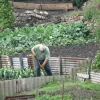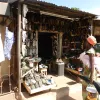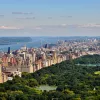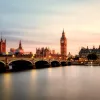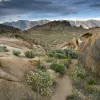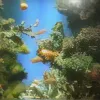Important update from TheSchoolRun
For the past 13 years, TheSchoolRun has been run by a small team of mums working from home, dedicated to providing quality educational resources to primary school parents. Unfortunately, rising supplier costs and falling revenue have made it impossible for us to continue operating, and we’ve had to make the difficult decision to close. The good news: We’ve arranged for another educational provider to take over many of our resources. These will be hosted on a new portal, where the content will be updated and expanded to support your child’s learning.
What this means for subscribers:
- Your subscription is still active, and for now, you can keep using the website as normal — just log in with your usual details to access all our articles and resources*.
- In a few months, all resources will move to the new portal. You’ll continue to have access there until your subscription ends. We’ll send you full details nearer the time.
- As a thank you for your support, we’ll also be sending you 16 primary school eBooks (worth £108.84) to download and keep.
A few changes to be aware of:
- The Learning Journey weekly email has ended, but your child’s plan will still be updated on your dashboard each Monday. Just log in to see the recommended worksheets.
- The 11+ weekly emails have now ended. We sent you all the remaining emails in the series at the end of March — please check your inbox (and spam folder) if you haven’t seen them. You can also follow the full programme here: 11+ Learning Journey.
If you have any questions, please contact us at [email protected]. Thank you for being part of our journey it’s been a privilege to support your family’s learning.
*If you need to reset your password, it will still work as usual. Please check your spam folder if the reset email doesn’t appear in your inbox.
Human habitats
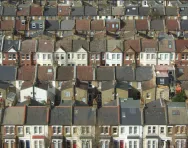
A habitat is a home environment for plants and animals or other organisms. For example, meerkats and lions like living in grassland habitats rather than in the chilly Arctic with polar bears and penguins. In the same way, there are places around the world that are perfect for humans to live and that meet all our needs.
Unlike animals, we humans are able to adapt to different habitats quickly because we can bundle up in jumpers and blankets if it’s cold, or sit in a paddling pool with an ice lolly if it’s hot. We are also able to adapt habitats to suit ourselves by building shelter in a hot place or digging a well for water in a dry place. This means that there are many habitats that humans can live in, as long as our basic needs for food and water are met.
Top 10 facts
- Human habitats are places where people live and where they can find all the things they need to survive.
- Most human habitats are in the same sorts of places as animal habitats, like forests and grasslands, but humans and animals live in very different kinds of shelters.
- Both humans and animals need shelter to survive, but what humans think of as their shelter and home is very different from what animals think of as home.
- Humans adapt their shelter – their home – depending on where they live and whether it’s warm or cool there, or whether it’s very wet or very dry.
- In fact, humans can build or find what they need in order to live almost anywhere in the whole world.
- Some human habitats are very crowded, such as in large cities, and others have lots of space, such as in the country.
- Other things humans need in their habitat are food, water and oxygen. Animals need these things too.
- We can get food from shops, or from our own gardens.
- We can get water from taps in our homes connected to a larger water supply like a well or reservoir.
- We need to make sure we take care of our habitat so others can enjoy it too. One way to do this is by recycling.


Boost Your Child's Learning Today!
- Get a tailored learning plan for your child
- Spend 10 minutes a week completing activities
- See your child jump ahead in their knowledge and confidence
Did you know?
- Like animals, we humans need a few basic things for our habitats:
- Food
- Water
- Oxygen
- Shelter
- Somewhere to raise offspring (babies)
- There are lots of places where we can get all of these things, but can you think of anywhere we can’t? For instance:
- The shelters we live in – our homes – are different all over the world because each one is made for the climate it’s built in.
Browse through the gallery below and see if you can spot the following:
- The city of London
- Allotments
- Local shops in Europe and Africa
- Growing plants on a balcony outside a flat
- Central Park in New York City
- The city of Paris in France
- The capital cities of the countries in the United Kingdom: London, Cardiff, Edinburgh and Belfast
Gallery
About
If you were making a habitat for a stick insect in a terrarium, you’d need to make sure it was able to get food and water, that it had a spot for shelter, and that there were holes on top so it can breathe. You’d also have to put things inside the terrarium that the stick insect likes, such as dirt, leaves and twigs. Humans need the same basic things – maybe not in the exact same way as a stick insect, but we need to be able to get food and water, somewhere for shelter, and plenty of air to breathe.
Most of us get food from shops, whether they’re small and just around the corner or very large and we can only get there by car or bus. So, it’s important that we live near enough to shops that sell the food we need. Many people also grow their own fruit or veg in their back garden, on their patio or balcony, or in an allotment (a bit of garden that you can rent to grow things).
It’s important to be able to get as much clean water as you need, whether it’s for drinking or washing. Finding water is easy these days in most places – all you need to do is go to the kitchen or bathroom and turn on the tap! Water that flows through a tap comes from a well or water tower. Humans can drink water from freshwater sources like lakes or rivers, but not from the ocean because it’s too salty.
We need to breathe oxygen in order to live, which makes Earth the perfect planet for us to live on. There are some places on Earth where there isn’t as much air as other places, such as on top of mountains. Air is thinner the higher up you go, so people (and animals) who live on top of mountains have to learn to adapt to breathing less oxygen in one breath than people who live at sea level.
The shelters we live in are our houses and homes. There are different kinds all over the world – visit our page about houses and homes to see pictures of some of them.
Though we think of cities as human habitats, the urban environment is home to lots of animals and plants, too! A United Nations report predicts that by 2050 two thirds of the world's population (around 68% of the people on Earth) are expected to live in urban areas.
Related Videos
Just for fun...
Draw a picture of your habitat. What kinds of animals live around your home and have their own habitat nearby?
Choose the animals that live in an urban habitat in an interactive activity
Children's books about cities and urban habitats
Find out more
Read descriptions of the major types of human habitats
Discover more about urban habitats
Watch a BBC Teach video to find out about the four capital cities of England, Scotland, Wales, and Northern Ireland, what makes a place a city and how many cities there are across the UK
An animation video about how human beings affect the environment and the habitats around them
Find out more about nature in urban habitats
Watch the BBC Bitesize guide to urban habitats
See for yourself
Kids' guides to cities around the world, including Barcelona, Cork, Rome and Xiamen
See pictures and videos of extreme human habitats, including the base of a Japanese volcano, a platform of oil rigs built in the Caspian Sea and a village on stilts
How many cities have you been to? Write a list of the world cities you'd most like to visit!

